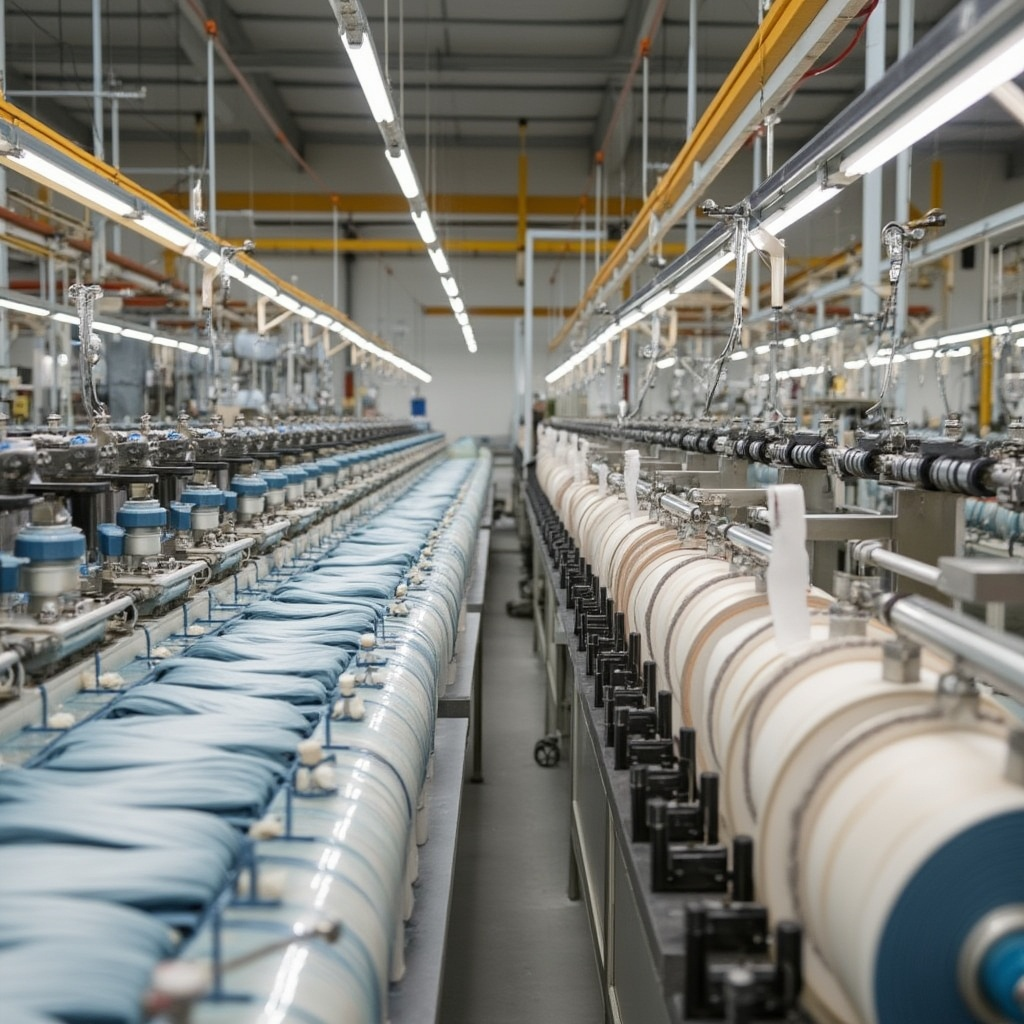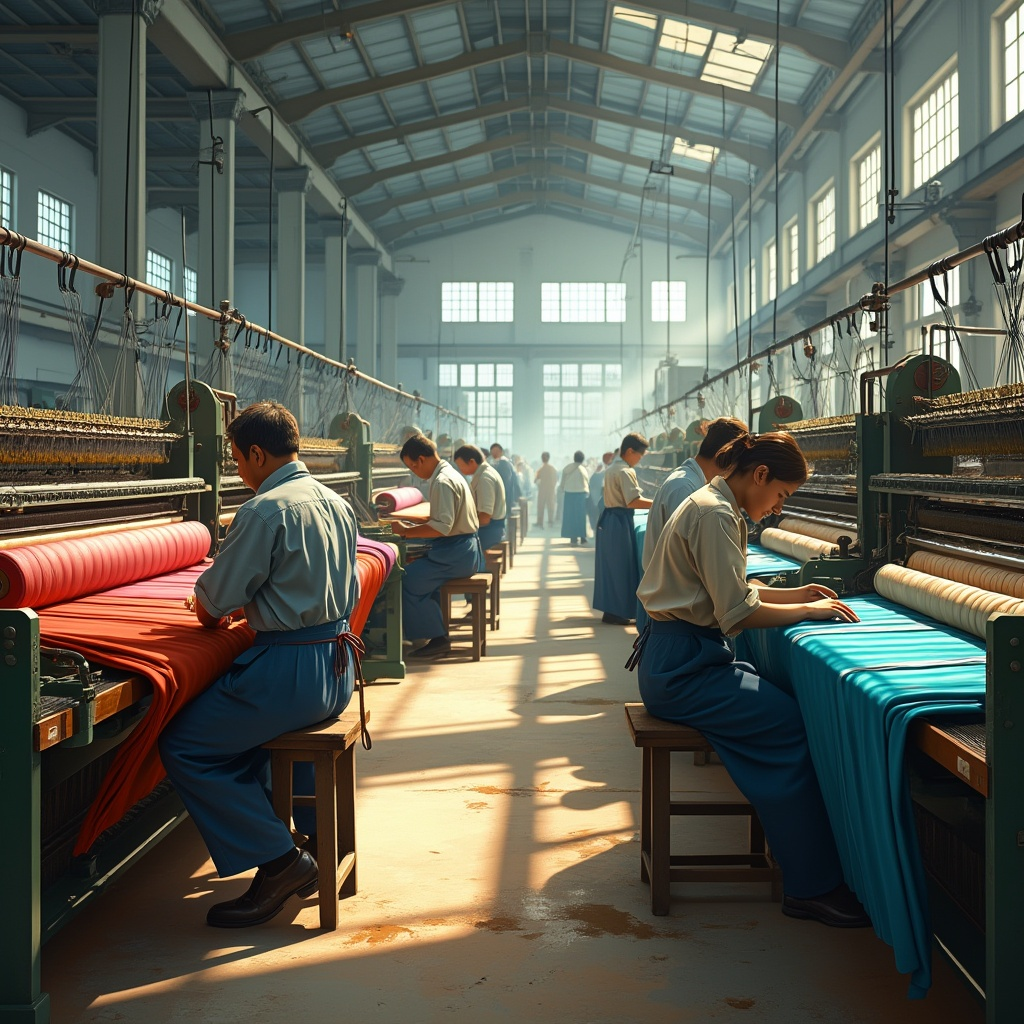In the world of textile manufacturing, where colors, patterns, and textures define brand identity, consistency is king. Whether you’re producing organic baby clothes or high-performance sportswear, ensuring that every roll of fabric meets the same quality standards is a monumental task.
Let’s dive into how large-scale textile manufacturers ensure consistency, from thread to finished product, with actionable tips, insights, and a dash of humor.

Why Consistency Matters in Textile Manufacturing
Imagine this: A customer orders a red dress, but half the batch turns out pink. That’s not just a manufacturing issue; it’s a branding nightmare. Consistency in textiles ensures:
- Brand Reliability: Customers associate your brand with quality they can trust.
- Cost Efficiency: Reducing defects minimizes waste and saves money.
- Customer Satisfaction: Happy customers = repeat business.
Fun Fact: Studies show that consistent product quality leads to a 60% higher likelihood of repeat purchases. In textiles, that could mean big bucks for your business.
Challenges in Maintaining Consistency for Textiles
Textile manufacturing isn’t just about weaving fibers; it’s an intricate dance of color matching, fabric finishing, and quality control. Common hurdles include:
- Color Inconsistencies: Dye batches can vary due to water pH, temperature, or chemical imbalances.
- Fabric Defects: Issues like uneven weaving or pilling can ruin a product.
- Production Variability: Different machines or operators may produce varying results.
Key Strategies for Ensuring Consistency
1. Standardize Your Processes
Standard Operating Procedures (SOPs) are non-negotiable in textile manufacturing. Every step, from spinning to finishing, should have clear guidelines.
Steps to Develop SOPs:
- Document every stage of production, including dyeing, weaving, and finishing.
- Use diagrams and videos to make instructions easy to follow.
- Regularly update SOPs based on feedback or technological upgrades.
| Pro Tip: Use visual aids in SOPs. A study found employees are 40% more likely to follow visual instructions. |
2. Invest in Quality Control Systems
In the textile industry, quality control is everything. Even a slight deviation in fabric texture or pattern can lead to rejected batches.
QC in Textiles:
- Inline Inspections: Check for defects like holes, uneven stitching, or loose threads during production.
- Color Matching Systems: Use spectrophotometers to ensure dye consistency across batches.
- End-of-Line Testing: Test fabric strength, shrinkage, and colorfastness before shipment.
| QC Technique | What It Solves | Tools Required |
|---|---|---|
| Inline Fabric Inspection | Detects weaving defects | Automated fabric inspection machines |
| Color Matching | Ensures consistent dye application | Spectrophotometers |
| Shrinkage Testing | Confirms dimensional stability | Shrinkage testing machines |
3. Employee Training and Collaboration
Textile production involves numerous human touchpoints, from loom operators to dye technicians. Training employees to follow best practices is essential for consistency.
How to Train Effectively:
- Offer hands-on training sessions for new equipment.
- Conduct refresher courses on color theory for dye technicians.
- Foster collaboration between departments (e.g., weaving and dyeing teams) to reduce miscommunication.
4. Implement Advanced Technology
Modern textiles demand modern solutions. Automation and data-driven tools can drastically reduce variability in production.
Technology to Consider:
- Digital Printing: Ensures precise, repeatable patterns.
- IoT Sensors: Monitor humidity and temperature in dyeing rooms to maintain consistent results.
- Automated Weaving Machines: Reduce errors in fabric production.
| Technology | Benefit | Example |
|---|---|---|
| Digital Printing | Consistent pattern replication | Digital textile printers |
| IoT for Dyeing Rooms | Controls environmental factors | Smart dye room sensors |
| Automated Looms | Reduces weaving defects | Jacquard looms |
5. Maintain Reliable Supplier Relationships
Your fabric quality is only as good as the materials you start with. Building strong relationships with suppliers ensures consistent raw material quality.
Tips for Managing Suppliers:
- Conduct regular audits of your suppliers.
- Use multiple suppliers to mitigate risks of shortages.
- Set clear quality standards in supply agreements.
How to Measure Consistency in Textiles
Tracking key metrics ensures you stay on top of your production quality.
| Metric | Why It Matters | How to Improve |
|---|---|---|
| Defect Rate | Identifies quality issues early | Strengthen inline inspections |
| Dye Consistency Score | Measures color accuracy | Use advanced color matching tools |
| Fabric Strength Variance | Tracks durability differences | Improve raw material sourcing |
Common Mistakes to Avoid
- Skipping Pre-Production Testing: Test dyes and fabrics before full-scale production to catch potential issues.
- Ignoring Machine Maintenance: Equipment breakdowns lead to variability. Regular maintenance is non-negotiable.
- Lack of Communication: Misalignment between departments (e.g., dyeing and weaving) can result in inconsistencies.
Related Resource: Check out our Guide to Textile Manufacturing Efficiency for more tips on avoiding pitfalls.
FAQs About Consistency in Textile Manufacturing
Q: How do I ensure dye consistency across large batches?
A: Use spectrophotometers to measure and adjust dye concentrations in real time.
Q: How often should QC inspections be performed?
A: Conduct inline inspections hourly and batch-end testing for every production lot.
Q: Can small textile manufacturers afford automation?
A: Start small with semi-automated tools like digital color matching systems and scale up as your budget allows.
Conclusion: Weaving Consistency Into Every Thread
Consistency in textile manufacturing isn’t just a technical challenge—it’s a promise to your customers. By standardizing processes, investing in QC, embracing technology, and fostering a well-trained workforce, you can deliver high-quality textiles time after time.
Want to explore more? Dive into our endearingbaby.com for additional insights and tips.
Remember: In the textile world, consistency isn’t just about perfection—it’s about trust. And trust is what keeps customers coming back.

